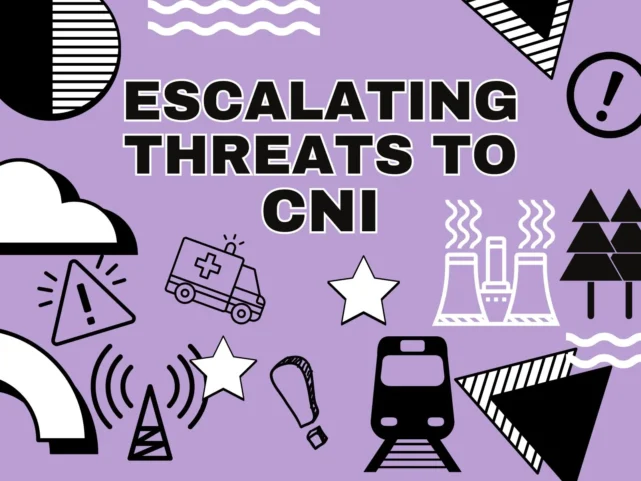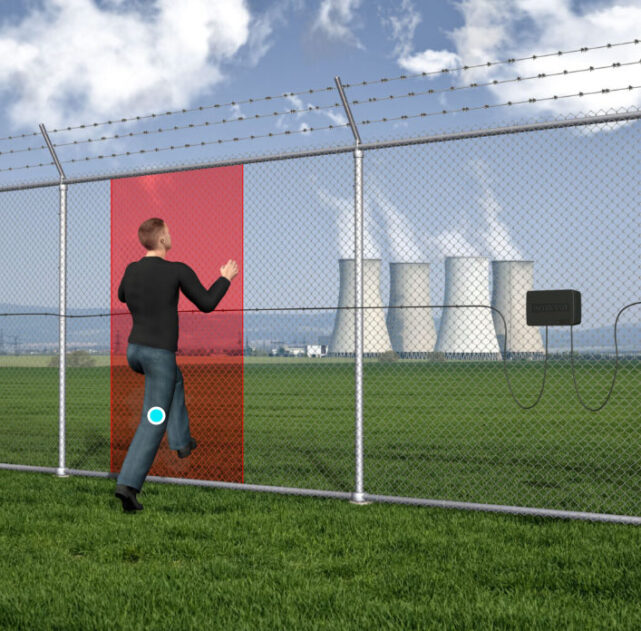In today’s interconnected world, the concept of Critical National Infrastructure (CNI) has become a focal point for governments and industries across the globe. From energy grids and water supplies to financial systems and healthcare services, our modern way of life relies on an array of essential services, but what exactly is CNI, and how is it protected from threats ranging from cyberattacks to physical sabotage?
In this blog post, we’ll explore the importance of critical national infrastructure and the different measures that can be implemented to help safeguard it.
What is Critical National Infrastructure?

Critical National Infrastructure (CNI) refers to the assets, systems, and networks that are essential for the functioning of a country. These types of infrastructure are vital to national security, economic stability, public safety, and overall societal well-being. If any of these infrastructures were to be significantly disrupted, it could result in serious consequences for both the public and private sector.
CNI typically includes the following sectors:
- Energy – Electricity generation, transmission, and distribution networks, oil and gas pipelines, and nuclear facilities.
- Water – Water treatment facilities, reservoirs, sewage systems, and desalination plants.
- Transportation – Airports, seaports, railways, highways, and public transit systems.
- Telecommunications – Internet infrastructure, satellite systems, phone networks, and broadcast media.
- Finance – Banks, stock exchanges, payment systems, insurance providers and investment companies.
- Healthcare – Hospitals, emergency services, pharmaceutical supply chains, and laboratories.
- Government Services – Law enforcement, defense agencies, emergency response units, and local government facilities.
- Food Supply – Agricultural production, food processing plants, and distribution networks.
- Public Safety – Policing, fire services, and public protection systems such as flood defenses.
These sectors form the backbone of any nation’s day-to-day operations. Their protection is crucial to maintaining stability, security, and public confidence over the long term.
Why Is CNI Vulnerable?

Given the essential nature of CNI, it’s a natural target of various threat actors including both terrorists and hostile states. The vulnerabilities can be categorized into three primary areas:
- Cyber Threats – With increasing reliance on digital systems and connectivity, cyberattacks pose a major threat to CNI. Hackers, state-sponsored actors, and cybercriminals may target critical systems to steal sensitive data, disrupt services, or cause widespread panic. Incidents like the 2021 Colonial Pipeline ransomware attack in the U.S. demonstrated the potential for cyberattacks to cause large-scale panic and disruption.
- Physical Threats – Sabotage and terrorism can physically damage CNI. This includes attacks on power plants, water facilities, or transportation networks. Events such as the 9/11 terrorist attacks have shown how devastating physical threats can be to infrastructure and national security.
- Natural Disasters – Everything from floods, hurricanes, earthquakes, and wildfires have the potential to damage or even destroy various components of critical infrastructure. These events not only disrupt essential services but can also overwhelm emergency response systems, leading to further economic loss and human casualties.
How Is Critical National Infrastructure Protected?

Protecting CNI is a complex task that requires cooperation between government, the private sector, law enforcement agencies, and cybersecurity experts. The protection of CNI will often involve several key strategies as detailed below.
Risk Assessment & Resilience Planning
Government and industry continuously assess potential risks to their critical infrastructure. This involves identifying weaknesses, forecasting potential threats, and developing resilience plans to help ensure that systems can withstand or quickly recover from disruptions.
Resilience planning includes developing backup systems, disaster recovery protocols, and emergency response strategies. As a basic example, hospitals have backup power generators in case of power outages, and financial institutions have contingency plans to protect against cyberattacks.
Cybersecurity Measures
In an increasingly digital world, robust cybersecurity is essential to safeguarding CNI. Protective measures include the use of firewalls, encryption, intrusion detection systems, and regular vulnerability assessments. Critical infrastructure operators should also implement strict access controls and network segmentation to help prevent cyber intrusions.
Governments work closely with private companies to improve cybersecurity through regulatory frameworks, such as the UK’s Network and Information Systems (NIS) Regulations, which set requirements for digital service providers to enhance the security of their networks.
Physical Security

Physical security involves measures like perimeter security fencing, surveillance cameras, security personnel, and restricted access to sensitive sites. For high-risk sectors such as nuclear power plants and defense facilities, additional measures such as armed security, fortified buildings, and security perimeters are often deployed.
Additionally, authorities may also conduct regular drills and simulations to prepare for potential terrorist attacks or natural disasters, helping to ensure that both personnel and systems are ready to respond effectively under such scenarios.
Collaboration & Information Sharing
Collaboration is vital in protecting CNI. Government and private sector organizations share threat intelligence to stay ahead of potential threats. In the UK, the Centre for the Protection of National Infrastructure (CPNI) provides expert guidance and threat intelligence to businesses and public sector organizations responsible for CNI.
International collaboration also often plays a role in helping to protect CNI, particularly in combating terrorism and cyber threats. Cross-border partnerships enable countries to share best practices, develop international security standards, and respond collectively to major incidents.
Regulatory Oversight & Compliance
Governments implement regulatory frameworks to ensure that organizations responsible for CNI adhere to strict safety and security standards. These regulations mandate regular inspections, audits, and compliance with best practices in security and risk management. For example, the UK’s Office for Nuclear Regulation (ONR) oversees the safety and security of nuclear installations across the nation.
Compliance with these regulations is enforced through penalties and sanctions, motivating organizations to take necessary security precautions seriously. Government and private contracts may also require that bidding companies are certified to a particular standard or regulation.
The Role of Emerging Technologies in CNI Protection

Emerging technologies are playing a significant role in improving the protection of critical infrastructure. For example, artificial intelligence (AI) and machine learning algorithms are getting better at detecting anomalies in network traffic, helping to identify cyber threats before they escalate into full-blown attacks.
Drones are increasingly used for inspecting hard-to-reach infrastructure, such as pipelines and power lines, reducing the risk to human workers and enabling faster repairs in the event of damage.
Additionally, blockchain technology is being explored as a means of improving the security of transactions and ensuring the integrity of critical systems, especially within the finance and supply chain sectors.
Conclusion
Critical National Infrastructure underpins the functioning of modern society, making its protection an urgent and ongoing priority. With evolving threats including everything from cyberattacks to terrorism and natural disasters, government and industry experts must work together to secure these vital systems. By leveraging technology, enforcing regulations, and fostering collaboration, countries can improve the resilience of their CNI, ensuring that essential services continue uninterrupted, even in the face of adversity.
Safeguarding CNI is not only about national security; it is also about protecting the foundations upon which daily life and economic prosperity are built. As we move further into the digital age, ensuring the resilience and security of our critical infrastructure will be more important than ever.




